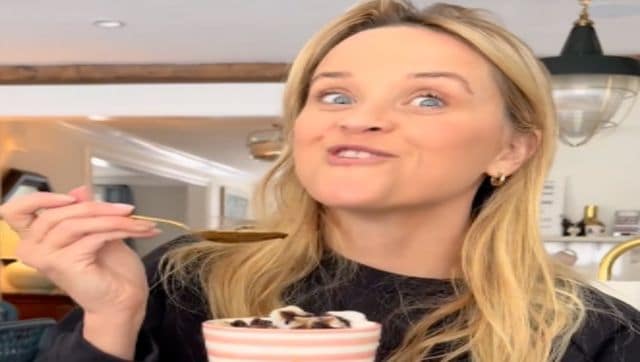Reese Witherspoon’s Snow Salt Chococinno Sparks Social Media Debate
Hollywood actress Reese Witherspoon has stirred up a frenzy on social media after sharing a TikTok video of herself making a “Snow Salt Chococinno”. The video has garnered over 4.5 million views and has sparked a heated debate about the safety of consuming snow. Witherspoon’s controversial winter dessert has even prompted health experts to weigh in on the matter.
The Controversial Video
Last Friday, the Legally Blonde star posted a video on TikTok in which she is seen crafting a chocolate drink out of snow, salted caramel sauce, chocolate syrup, and cold-brewed coffee. Witherspoon gathered snow from outside her house and used it as a key ingredient in her concoction. The post quickly went viral, with many expressing concern about the safety of eating snow.
Addressing Concerns
Witherspoon’s snow dessert video received a barrage of comments expressing worry about the safety of consuming snow. In response, the Hollywood star released three additional videos to address the concerns raised by her audience. In one of the videos, she defended her creation, declaring that her ‘snow salt chococinno’ was “delicious” and questioning whether eating snow was truly harmful.
Is it Safe to Eat Snow?
With the debate surrounding Witherspoon’s snow dessert intensifying, many are left wondering whether it is actually safe to eat snow. The answer, however, is not a straightforward “yes” or “no”. According to doctors and scientists, the safety of consuming snow is nuanced and depends on various factors.
Concerns About Snow Pollution
Experts caution that the first snowfall is not the safest to taste, as snow can absorb pollutants as it falls to the ground. The air acts as a scrub brush, and scientists have found that new snow may contain dangerous particles and pollutants such as pesticides, soot, mercury, and formaldehyde. This means that consuming the initial snowfall, while visually appealing, may not be safe.
Urban Snow Hazard
A 2016 study revealed that snow in urban areas can absorb toxic pollutants from car exhaust, making it potentially harmful. Snow plowed from roads or pavements should also be avoided, as it may contain chemicals such as rock salt used for melting ice, posing health risks if consumed.
Warning Signs
Discoloured snow, including pink-tinted “watermelon snow”, is a sign of contamination and should not be consumed. This type of snow often contains bacteria and other harmful substances, making it unsafe to eat.
Consumption Guidelines
While consuming small quantities of clean, freshly-fallen snow poses minimal risk, experts advise against making a meal of it. Eating excessive amounts of snow can lead to stomach upset or infection, depending on the contents of the snow.
Expert Recommendations
Experts recommend exercising caution when consuming snow, especially in urban areas where pollutants may contaminate the snow. They advise against consuming snow plowed from roads, discoloured snow, or snow from high-traffic areas.
Ultimately, while eating small amounts of snow may not pose immediate health risks, it is important to be mindful of potential contaminants and exercise caution when indulging in snow-based treats.
For more information on snow safety and related articles, visit Snow Safety.

